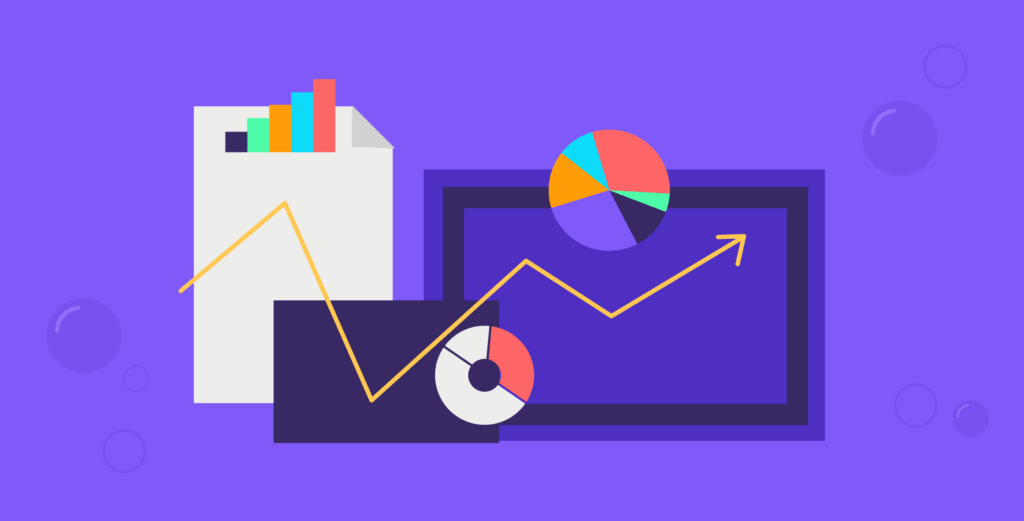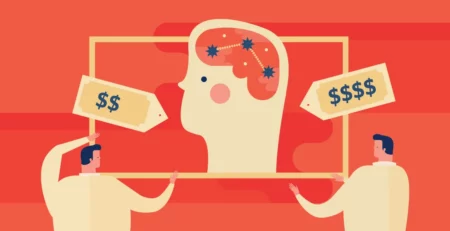The backbone of the universe functions on numbers. Yet numbers alone are never enough to paint a full picture. Nobody looks at the night sky and thinks of twos, threes, and fours. That’s where data storytelling comes in. It helps turn those numbers into something conceptual. Data storytelling is a potent blend of what’s analytical and what’s narrative, combining both into compelling stories.
In this article, we’ll explore the transformative potential of data storytelling, from its definition to its practical applications. Whether you’re a seasoned analyst or a curious novice, join us as we unlock the power of storytelling to illuminate insights and drive informed decisions.
The goal of data storytelling is to convey complex information in a way that is easy to understand and engaging for the audience. To break this down further, let’s look at the individual components of both.
Table of Contents
What is Data Analysis?
This one’s for those of you who’ve never had to suffer the unfortunate fate of sitting through a statistics course. Data analysis, as it says in the name, is the examination and interpretation of data. It’s the byproduct of taking something illegible to the average person and making it legible. For example, if you were to be presented with a large set of data and graphs, assuming you’re not an analyst, you wouldn’t be able to make heads or tails of it. That’s how data analysts help. Data analysts take said data and, using various tools like calculators, charts, and graphs, turn numbers into something meaningful. From there, the ones interpreting the analysis can make the right decisions.
What is Storytelling?
Since the dawn of man, we’ve been telling stories. Whether it be through cave paintings or tablets, there’s always a story to tell. Heck, even an ancient Babylonian receipt is a story about a pretty sleazy copper merchant. Safe to say I don’t think I have to tell you what a story is or why it’s important. However, the method of storytelling is very important to our daily lives. You see, a story may be anything, but how a story is told is a different matter. The format, techniques, and language of a story ultimately determine how people interpret the tale being told. Storytelling is what makes tales relatable and engaging.
What is Data-Driven Storytelling?
If you combine this storytelling with data analysis, you gain something more than just an explanation of a graph. You gain something that’s both logical and natural, yet actionable at the same time. But how exactly does one go about that? How do I make numbers magical? Well, to understand these questions, we first need to understand the key elements of data-driven storytelling.
The first key element is data visualization. We usually visualize data through charts, graphs, and other visual elements. These help to make complex information more accessible and easier to understand. Graphs highlight trends, make comparisons, and highlight relationships. They make it easier to grasp the key insights without being distracting.
Another key element is narrative structure. Like any good story, a story about data needs to have an arc. You start with a compelling opening. Build up to something. This could be through the use of tension and suspense. But end it off with a satisfying resolution. In doing so, you’re guiding and engaging the audience at the same time. And this is very much possible, considering data itself is all about peaks, valleys, and curves. It’s up to the analyst to set the tone.
The last core key element is having presentation. Presentation is how you convey the message. Storytelling techniques are already a part of the presentation, but the way that the story is being narrated gives it that unique edge. If you master these key elements, your data-driven storytelling skills will take you very far. But that raises the question…why is it so important to begin with?
Benefits of Data-driven Storytelling
Data-driven storytelling offers a multitude of advantages across various domains, making it a powerful tool not just for organizations but also for individuals. Here are some key benefits:
Improved Comprehension
Data-driven storytelling helps people understand complex information more easily. That, in turn, improves one’s comprehension skills. By presenting data in a narrative format with visual aids like charts and graphs, it becomes simpler for audiences to grasp key insights and trends without getting lost in the numbers. It also creates an environment where media literacy starts improving. This is because audiences are tricked into analyzing what they’re perceiving rather than just taking everything at face value. The results of this are…
Enhanced Decision-Making
The duty of the storyteller is one thing. But the duty of the ones to whom the data is being presented is another. When we’re faced with large amounts of information and asked to make a decision, we want to be informed. Yet the size of the data can lead to poor decisions. However, when presented with clear and compelling data stories, decision-makers can make more informed choices. That’s because narrative is made of themes, and themes are essentially patterns in themselves. When patterns are highlighted correctly, the way decisions are made becomes more effective and risks are mitigated. To achieve this, one needs to add that extra spice.
Increased Engagement
It’s only natural to be drawn to a story. But you don’t just want that story to be seen at face value. You want it to resonate. By crafting an engaging narrative, you can draw the audience into a new world. This is useful when it comes to marketing. It allows the data analyst to act as a semi-marketer, weaving a tale that not only sells a product but also actively creates a conversation around it too.
Effective Communication
When data is presented normally, there’s not much to be said. The experts have communicated their findings, and now it’s up to the audience to digest them. But when it comes to data-driven storytelling, there’s an opening for dialogue. Accessibility creates conversations, and conversations boost engagement. It’s a continuous cycle that feeds itself. It also leads to achievable results.
Alignment of Goals
The achievable results mentioned above underscore the importance of aligning shared goals. If you’re in a meeting with a group of investors, and you want them to praise the work your business is doing all at the same time, what better way than to present your work in the best way possible? Data storytellers inspire this unity and collective action through their stories, thus achieving desired outcomes.
Demonstration of Impact
Finally, the impact your organization is making isn’t something to be jotted down and shelved anymore. Much like how humans of old have left their impact through the stories they told. Data-driven storytellers can do much of the same, if not more. By telling stories of success and progress through data-driven evidence, organizations can build credibility. This not only creates trust and support, but it also inspires others as well.
What Are The Use Cases?
So, what areas of expertise can you apply data-driven storytelling to? Keep reading to see some of our top picks.
In Marketing and Sales
In marketing, data storytelling helps companies understand customer behavior and preferences. By analyzing sales data, website traffic, and social media engagement, marketers can identify trends and tailor their messaging to resonate with target audiences. For example, a retail company might use data storytelling to illustrate how customer demographics influence purchasing decisions, leading to more targeted marketing campaigns and increased sales.
In Business Intelligence and Analytics
Data storytelling is integral to business intelligence and analytics, where it enables organizations to make data-driven decisions. For instance, a business might use data storytelling to visualize key performance indicators (KPIs) such as sales revenue, customer retention rates, and inventory levels. By presenting this data in a narrative format, decision-makers can quickly identify areas for improvement and devise strategies to drive growth and profitability.
In Healthcare and Medicine
In healthcare, data storytelling plays a crucial role in patient care and public health initiatives. For example, public health agencies might use data storytelling to track disease outbreaks and communicate preventive measures to the public. Similarly, healthcare providers can use data storytelling to analyze patient data and identify patterns that inform diagnosis and treatment decisions, ultimately improving patient outcomes.
In Education and Academia
Data storytelling is increasingly being used in education to enhance learning experiences and improve student outcomes. Educators can use data visualization tools to create interactive learning materials that engage students and facilitate understanding of complex concepts. For example, a history teacher might use data storytelling to illustrate how historical events have shaped the world today, fostering critical thinking and analytical skills in students.
In Environmental and Social Impact
Data-driven storytelling has the power to drive positive change in environmental conservation and social justice efforts. For instance, environmental organizations might use data storytelling to raise awareness about climate change and advocate for sustainable practices. In a similar sense, advocacy groups can use data storytelling to highlight disparities. Highlighting a lack of access to resources and opportunities and then mobilizing support for policies promotes equality and justice.

Storytelling is a versatile tool that transcends industries and disciplines. It empowers individuals and organizations to unlock the value of their data. Whether it’s informing marketing strategies, driving business decisions, or advocating for social change, data-driven storytelling has the potential to make a profound impact on the world around us. But how exactly can it be used?
What Are Some Strategies for Effective Data Storytelling?
Data storytelling is not just about presenting numbers; it’s about crafting narratives that resonate with audiences and drive action. To effectively communicate those insights and engage your audience, consider the following strategies:
Know Your Audience
As with any medium, the audience is always key to presentation. Pitching to a group of investors and advertising to a general audience aren’t the same thing. When presenting your narrative, think about who exactly you’re presenting to in the first place. An investor may not care about fluff as much as the straightforward facts. The opposite is true for a general audience. So when it comes down to it, make sure your message is resonating with both in a relevant manner.
Simplify Complex Information
When it comes to crafting that engaging narrative, try not to make it too complex. Too much data is bad, yes, but so is trying to craft a story with too many plot twists. When presenting your narrative, the best thing to do is to make it straightforward and simple. The wording you use should be concise and non-technical. If you’re struggling to do this, try narrowing your focus to key insights that you can offer on the data.
Start Strong
A strong story usually comes with a strong opening. The phrase “never judge a book by its cover” may be true in theory, but in practice, people will do exactly that. The goal should never be to get to a point in the narrative where the audience is engaged. No, the goal should be to engage the audience from the very start. They shouldn’t have to wait for the story to resonate.
Make it Relatable and Relevant
Data isn’t something on a sheet to just be examined. And stories don’t exist in a vacuum either. When both are combined, they lead to an opportunity to take what’s being presented and to make it “relatable.” If somebody is being presented numbers, they can always be connected to something happening in day-to-day life or in real time to real-world events. This helps to ground the narrative in something relevant. It also fosters empathy.
Use Multiple Formats for Storytelling
Data-driven storytelling isn’t limited to one format. It’s best to experiment with different mediums, such as text, visuals, and interactive media, to convey your message. Using charts, graphs, and infographics helps to illustrate key points. Incorporating multimedia elements like videos and animations adds both depth and richness to your story.
Create a Narrative Arc
Like any good story, a data story should have a clear narrative arc that guides the audience from beginning to end. Take that strong opening and introduce problems to it. These can come in the form of questions, of course. From there, build some tension using the problems/questions and resolve them to create relief. Make sure to end the story with a satisfying conclusion; it doesn’t have to be a good ending per se, just one that fits the story you’re trying to tell.
Use Visualization Wisely
Visuals are powerful tools for conveying data insights, but they must be used wisely. If a visual is too distracting, it can take away from key points. Choose the right type of visualization for your data and audience. Ensure that it effectively communicates the information you’re trying to convey. Avoid cluttering your narrative with too many visuals and keep it focused.
Incorporate Context and Emotion
Context and emotion are essential elements of effective storytelling. Leveraging rhetoric while presenting data is integral to explaining its significance. Tools such as anecdotes and testimonies help evoke that emotion and keep things personal. If you want a good example of how to do this, look at political debates. They’re a good way to pick up on the right kind of rhetoric to make a convincing argument.
Iterative Refinement and Feedback
Storytelling isn’t a one-and-done deal. Never be afraid to iterate on what you made. Try to get feedback on what you made from both your colleagues and your audience. This will allow you to further refine and polish your skills for the future. Also, try to test different approaches on different groups. This way, you can get a better grasp of what works. However, do keep in mind, like always, that the audience matters. Try to avoid switching up too much on the fly.
Practice Empathy and Ethical Considerations
Finally, remember to practice empathy and ethical considerations in your storytelling. Try to consider the potential impact of your story on different stakeholders and communities, and strive to present data in a manner that’s fair and accurate. Make sure to respect privacy and confidentiality. Always prioritize the well-being and dignity of those represented in your data. A good story must be accessible; therefore, it shouldn’t aim to marginalize most people, unless it’s trying to criticize them.
What Are Some Tools and Resources?
In the ever-evolving landscape of data storytelling, a plethora of tools and resources are available to help individuals and organizations craft compelling narratives from their data.
Data Visualization Tools
Tools like Tableau, Power BI, and Google Data Studio enable users to create stunning visualizations from their data. These platforms offer a range of chart types, customization options, and interactive features, making it easy to present data in a visually engaging and informative way.
Storytelling Platforms
Platforms such as Flourish and RawGraphs provide templates and tools specifically designed for data storytelling. These platforms allow users to create interactive data visualizations, infographics, and multimedia presentations with ease, making it simple to bring data stories to life.
Books and Articles
There is a wealth of literature available on data storytelling, ranging from books to articles and blog posts. Books like Storytelling with Data by Cole Nussbaumer Knaflic and The Visual Display of Quantitative Information by Edward Tufte offer in-depth insights into the principles and techniques of data storytelling, while online articles and blog posts provide practical tips, case studies, and examples to inspire and inform.
Open-Source Tools
For those on a budget or with specific customization needs, open-source tools like D3.js and Plotly offer powerful options for creating custom data visualizations. These tools provide users with the flexibility to design and implement data stories according to their unique requirements, with the added benefit of being freely accessible and customizable.
By leveraging these tools and resources, individuals and organizations can unleash the full potential of their data, transforming it into compelling narratives that inform, engage, and inspire action. Whether you’re a seasoned data analyst or a novice storyteller, there’s a wealth of tools and resources available to help you tell your data story effectively.
Data with Impact
Data storytelling is a transformative tool that empowers individuals and organizations to unlock the value of their data. It drives informed decision-making and inspires action. By combining data analysis with storytelling techniques, data storytellers can craft compelling narratives that resonate with audiences, fostering understanding, engagement, and collaboration across diverse fields and industries.
With an array of tools, resources, and strategies at their disposal, data storytellers have the power to illuminate insights, drive positive change, and create a more informed, equitable, and sustainable future for all. Embrace the art of data storytelling, and unleash the true potential of your data to make a difference.
At EvolveDash, we believe numbers alone aren’t enough to inspire action. That’s why we bring data to life through storytelling. By combining analysis with narrative, we turn dry figures into clear, engaging insights that drive better decisions.
Ready to find the potential of your data? Let’s work together to create stories that not only inform but also engage and inspire.
Connect with us today and transform your data into stories that make a difference.
FAQs
- What tools are best for creating interactive data stories?
Tools like Tableau, Power BI, Flourish, and RawGraphs are great for creating interactive data stories. These platforms allow you to visualize data in ways that engage your audience with dynamic, clickable elements and real-time updates.
- How can data storytelling improve marketing strategies?
Data storytelling helps marketers better understand customer behaviors and trends. By presenting data in a compelling narrative, companies can more effectively target their audiences and create personalized marketing campaigns based on insights from customer data.
- What role does empathy play in data storytelling?
Empathy is crucial in data storytelling because it helps the storyteller connect with the audience on an emotional level. By understanding the audience’s needs and concerns, data storytellers can present information in a way that resonates with their experiences, making the data more meaningful.
- How do you handle ethical issues in data storytelling?
Ethical issues in data storytelling are handled by ensuring that data is presented accurately and without bias. It’s important to maintain transparency, respect privacy, and ensure that the data represents real, truthful insights, without manipulating it to fit a particular narrative.
- Can data storytelling be used in small businesses, or is it more suited for large corporations?
Data storytelling is valuable for both small businesses and large corporations. Small businesses can use it to make data-driven decisions, improve customer relationships, and optimize their operations by presenting data in a way that’s easy to understand and actionable.



















